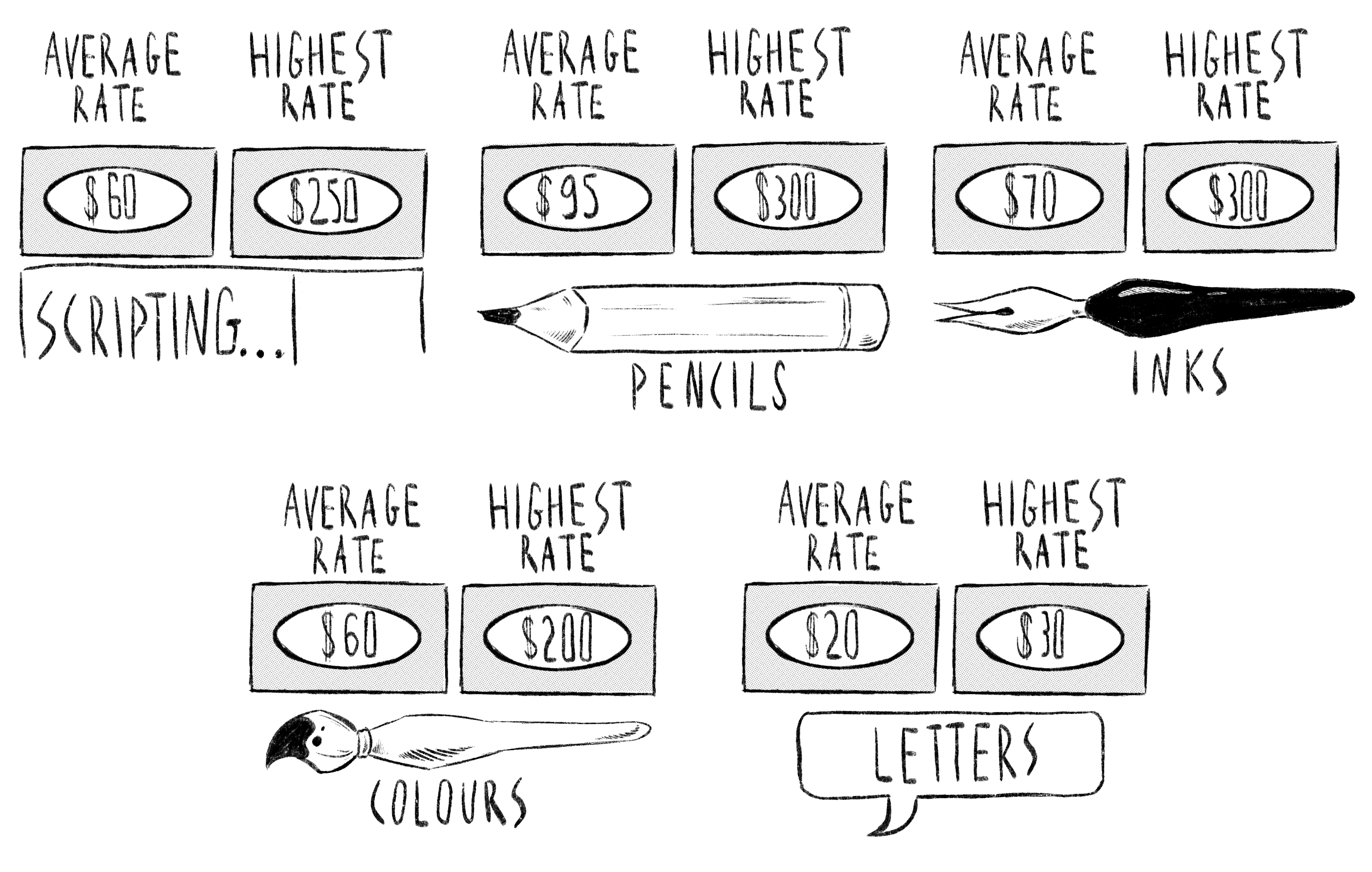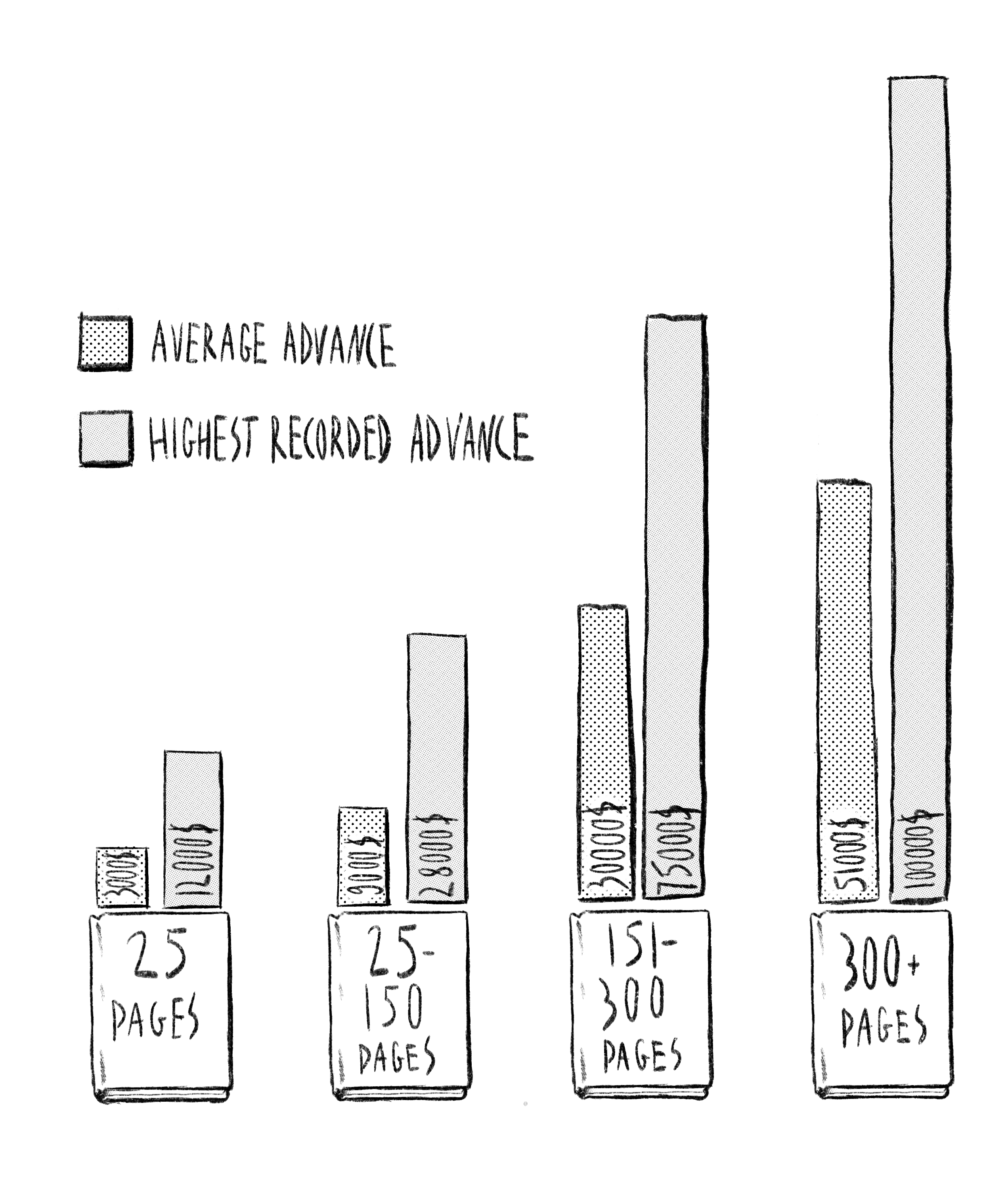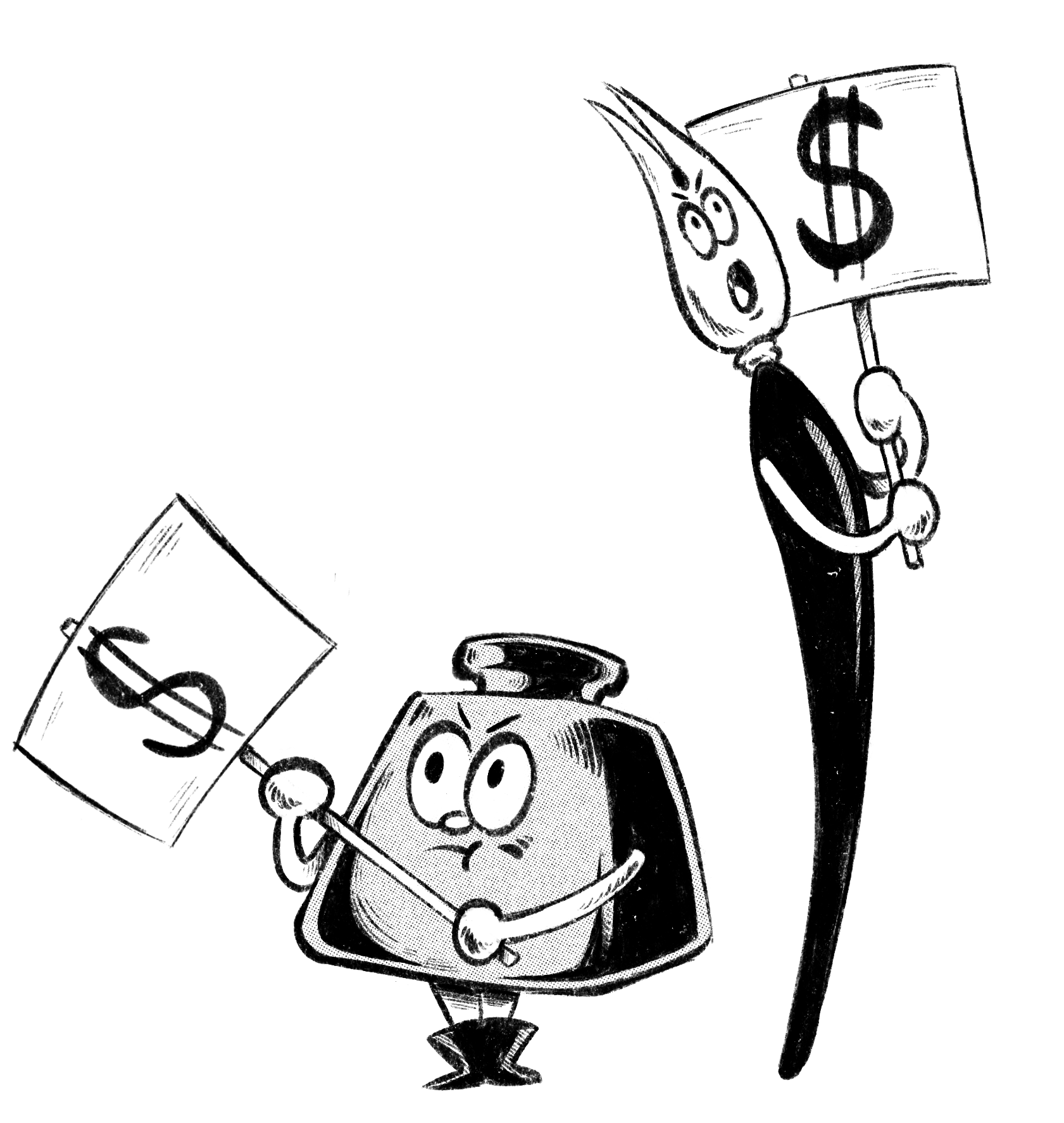The Cartoonist Cooperative ran its first Comics Worker Survey in June 2023 and received more than 100 USian respondents working in mainstream publishing and self publishing. Participation was open to anyone making income in any capacity from comics. Why are income and rate transparency important? It decreases the range of inequities in pay and sets expectations for workers and employers. The Cartoonist Cooperative intends to gather extensive data annually through these surveys to provide insight into the economic realities of comics workers today. We hope this data also serves as a rallying cry to motivate those working in the industry to collectively demand livable and sustainable pay.
Want to download a PDF of this report? Click here or read below!
Disclaimer: As an organization, The Cartoonist Cooperative neither sets rates nor advises members on what rates or rate structures they should choose. Individual members’ rates vary significantly depending on the nature of the work, the time frame of the assignment, the degree of special expertise required, the member’s experience, and other variables.
Methodology
To collect info about the working conditions of cartoon workers who had income from comics in 2022, the Cartoonist Co-op administered an online survey from June 14, 2023 until the end of July 2023. This survey asked questions about pay rates, royalties, and time spent on different tasks among other questions ( Appendix I). The survey had 100 respondents. However, some respondents’ or some of their answers were excluded from analysis. Responses about hours worked were capped at 60 . If respondents answered greater than 60 their response was excluded for that question. As well, any responses for monthly income that would allow them to live comfortably over $10k were assumed to be annual numbers and divided by 12 to get a monthly value so they could be included with the other responses.
To estimate average values for numeric questions, mean values were calculated using survey responses. To summarize questions with categorical responses, proportions of response with that answer were calculated.
Sample size and margins of errors: To estimate uncertainty in summary values, margin of error (MOE) or maximum percent MOE were calculated at the 95% confidence level ( for numerical and categorical questions respectively). For any given question at a given sample size, 95% of the time you repeat the survey with the same number of respondents the estimated value (mean or proportion) would fall within the range created by adding or subtracting the MOE. A smaller sample size (i.e. less respondents for a question) means a larger MOE. The sample size will be smaller for questions which were not asked of all respondents or not all respondents answered, and for analyses of subsets of respondents. Where this is the case, the margin of error will also be larger.
Findings:
Respondent Demographics:

- The respondents averaged 9 years working in comics, with a median of 8 years.
- 54% of respondents were in the 25-34 age range and 32% in the 35-44 age range.
- 79% of respondents identified as a cartoonist, fulfilling all roles including penciler, inker, colorist, and letterer.
- 40% of the respondents were agented.
- The majority of respondents were from California, New York, Oregon, Washington and Minnesota.
- The annual average cost of living in California is $53,171, $49,623 for New York, $46,193 in Oregon and $41,498 in Minnesota according to Forbes.
Page Rates:

- The average scripting rate per page of comics was $60 with the highest rate recorded being $250.
- The average rate per page of pencils was $95 with the highest rate recorded being $300.
- The average rate per page of inks was $70 with the highest rate recorded being $300.
- The average rate per page of colors was $60 with the highest rate recorded being $200.
- The average rate per page of letters was $20 with the highest rate recorded being $30.
The average hours worked per page:
- Script: 5
- Pencils: 8
- Inks: 7
- Colors: 4
- Letters: 1
Extrapolating from the data above, this means that the average highest-hourly rates reported per page in 2022 were:

- Script: $12/hr
- Pencils: $11.88/hr
- Inks: $10/hr
- Colors: $15/hr
- Letters: $20/hr
Wages were rounded up to the nearest cent when necessary.
Advances:
When a publisher acquires a book from an author or creative team, they are typically offered an advance against the book’s royalty earnings to support the creator’s work, commonly referred to as just an advance. These advance payments are often cut into installments based on certain milestones, with the initial advance commonly referred to as a signing advance and the final payment being the delivery advance.

- The average advance for comics up to 25 pages was $3000 with the highest advance recorded being $12000.
- The average advance for comics 26 – 150 pages was $9000 with the highest advance recorded being $28000.
- The average advance for comics 151-300 pages was $30000 with the highest advance recorded being $75,000.
- The average advance for comics 300+ pages was $51000 with the highest advance recorded being $100,000.

Advance payment split:
- None: 4
- Halves: 13
- Thirds: 13
- Fourths: 15
- Fifths: 1
- Sixths: 1
- Sevenths: 1
Respondents who reported payment tardiness:
- None: 63
- 1-3 months: 22
- 4-6 months: 8
- 7-10 months: 1
- 11+ months: 4

The months worked per book:
- Up to 25 pages: 2
- 26 – 150 pages: 11
- 150-300 pages: 15
- 300+ pages: 14
Average work time scheduled by publisher per book in months:
- Up to 25 pages: 5
- 26 – 150 pages:11
- 150-300 pages: 14
- 300+ pages: 30
Royalties
A royalty is an amount of money the publisher pays to an author from the sale of each book. A retail price royalty refers to the percentage the author gets for every copy sold, based on the book’s retail price. A profit participation royalty (sometimes called backend) is when an author is paid a percentage of the book’s net profits.

- 45% of respondents were not offered royalties for their work.
- 70% of respondents received a retail price royalty while the rest were given a profit participation royalty.
- The average book royalty was 8% of retail price.

Percentage of respondents work that was work-for-hire: 65%
According to Cornell Law School: “A work for hire, or work made for hire, refers to works whose ownership belongs to a third party rather than the creator. Under general copyright principals, a copyright becomes the property of the author who created the work. However, work for hire is an exception to this principle, and can be established through contract before a particular work is created.”
This high percentage means a majority of respondents do not see any further income for their work from royalties, licensing, merchandising or derivative works.
Conclusions:
From our survey data, we see that the USian comics worker made an average of $21,000 through their comics work with a median of $10,000 overall. Comics work income includes advances, royalties, and fees from licensing and subsidiary rights. Across the United States, the average minimum income necessary for a single comics worker to cover their living expenses and stay above the poverty line, without outside assistance from friends, family, or the government is $60,000. This means the majority of comics workers cannot survive on comics work alone nor are they making above federal minimum wage of just $7.25/hour from their comics work.
To illustrate the average cartoonist’s work year, let’s take the data from those working on 150-300 page comics. Average advances for comics that length are $30000 but are separated into quarters, usually ¼ on signing, a ¼ at the completed pencils stage, a ¼ at the completed inks stage and finally ¼ either upon completion or at publication. This means for the first year working on a longform comic, the cartoonist will only see $15000 of their advance and may take up to a year or two more to see the rest of the advance. To put this in context, the 2023 federal poverty level (FPL) in the US was $14,580. It’s clear to see that the overwhelming majority of cartoonists need to be working on multiple projects or have other jobs to support their comic work.
Closing Notes:

At the time this is being written, industries across the United States and the world over are seeing more momentum on strikes and labor stoppages, with almost 400 strikes in the US alone and more work stoppages involving over 1000 people than we’ve seen in over a decade. And unionizing workers are seeing better wages across the board from their contracts, proving that collective action is working in improving people’s lives under oppressive working conditions.
Comic workers are no exception here. We need more collective action to demand better pay by any means necessary, which we continue to rally for under the banner of the Cartoonist Cooperative. Making comics as a career is not sustainable with our current rates, but we can make our living wages a reality together.









